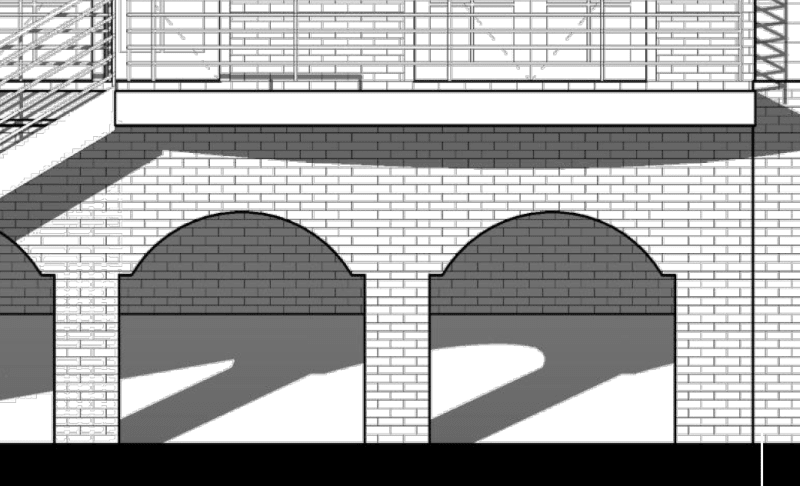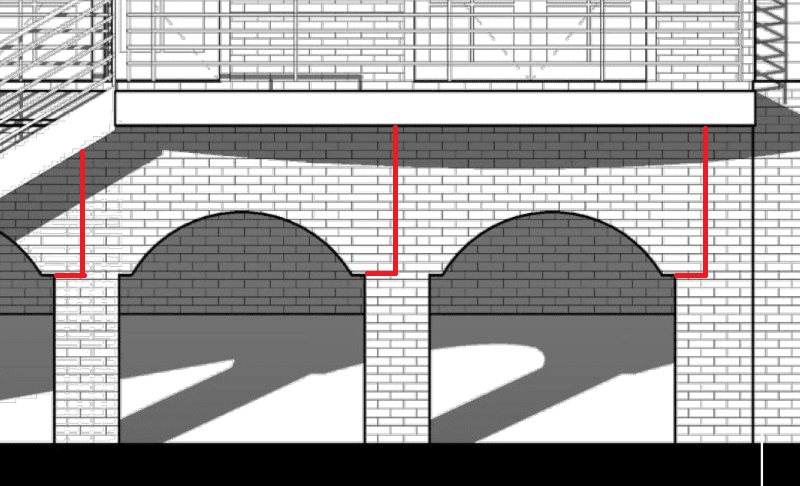I
 could use some input....
could use some input....
These brick arches support an exterior deck. The joists cantilever over the arch about 7 ft. The arch span is about 7'-4"
My service load on the on the arch is about 850 PLF not including the self-weight of the masonry. The masonry wall can be any thickness up to 16”. The Architect wants to see brick on both sides of the wall and wants to avoid seeing a rolled lintel if possible. I think I can talk him out of the flat portions at the base of the arch and using soldier courses above the opening (a necessity). I was considering reinforcing the piers and typing them together above the arch with a reinforced masonry beam that would support the gravity load and take some of the demand off the arch. This would also allow the piers to resist the arch thrust. Looks like NCMA has a TEK article about designing these things.
Do you guys have any better ideas?
Thanks

These brick arches support an exterior deck. The joists cantilever over the arch about 7 ft. The arch span is about 7'-4"
My service load on the on the arch is about 850 PLF not including the self-weight of the masonry. The masonry wall can be any thickness up to 16”. The Architect wants to see brick on both sides of the wall and wants to avoid seeing a rolled lintel if possible. I think I can talk him out of the flat portions at the base of the arch and using soldier courses above the opening (a necessity). I was considering reinforcing the piers and typing them together above the arch with a reinforced masonry beam that would support the gravity load and take some of the demand off the arch. This would also allow the piers to resist the arch thrust. Looks like NCMA has a TEK article about designing these things.
Do you guys have any better ideas?
Thanks

